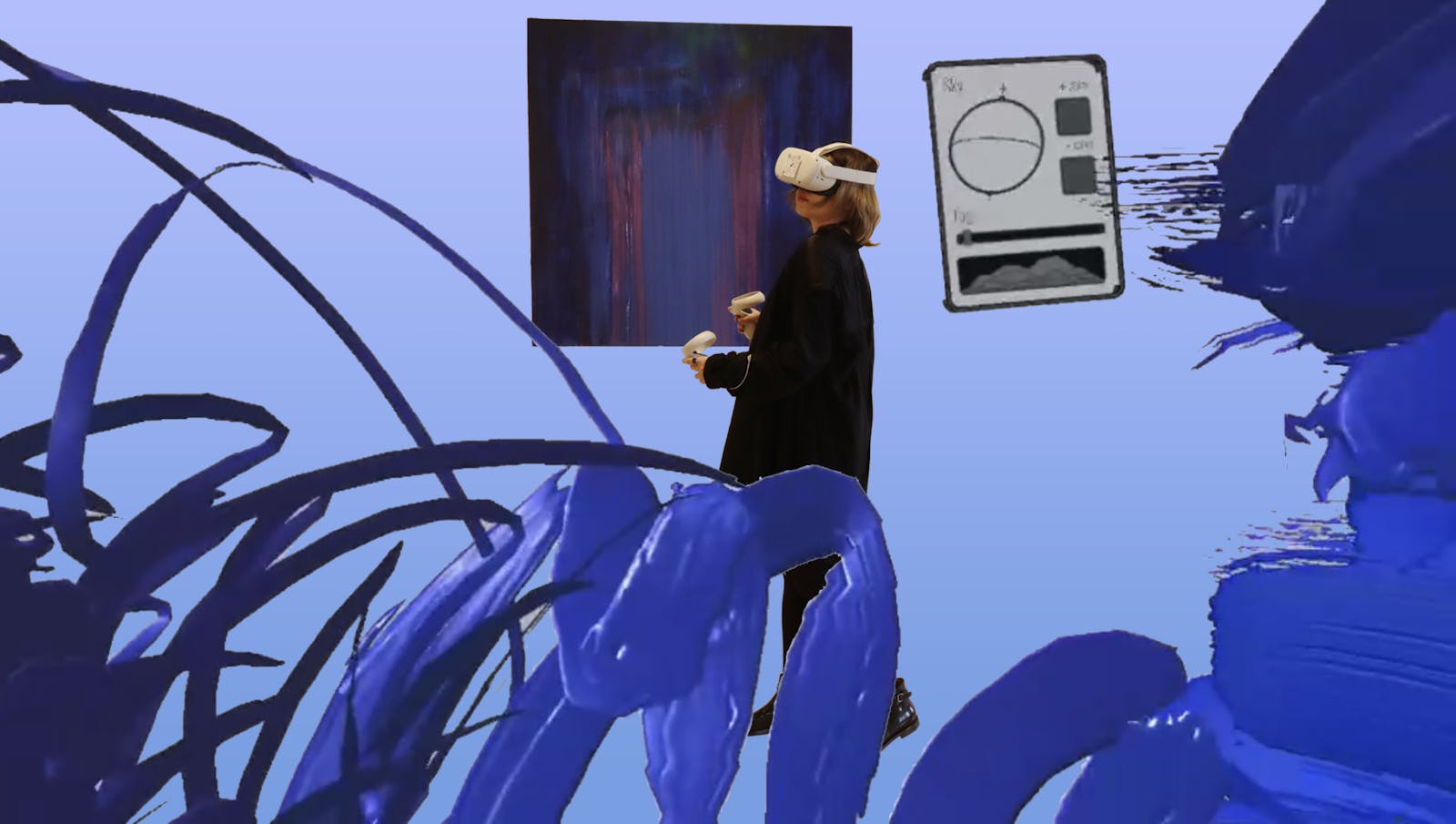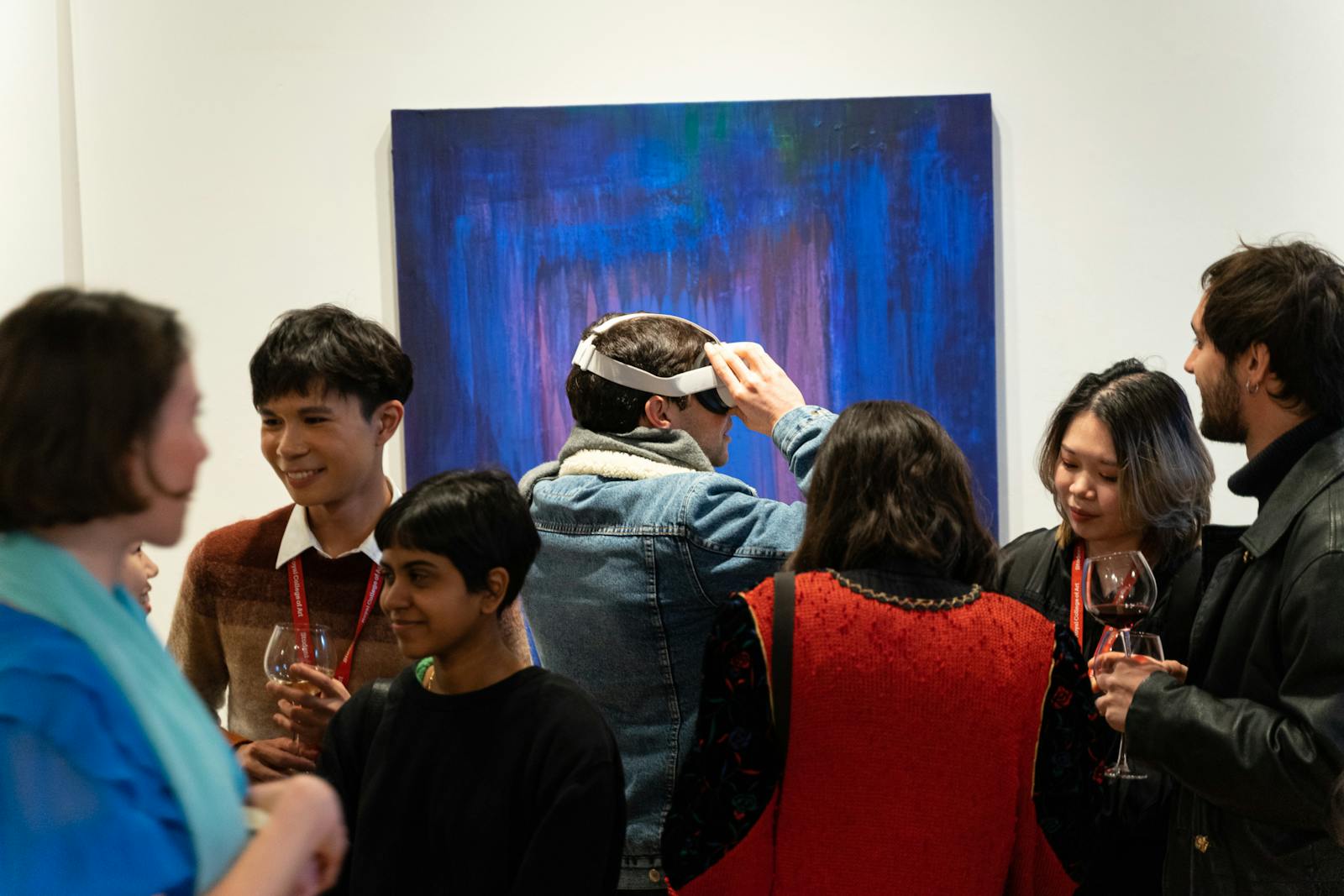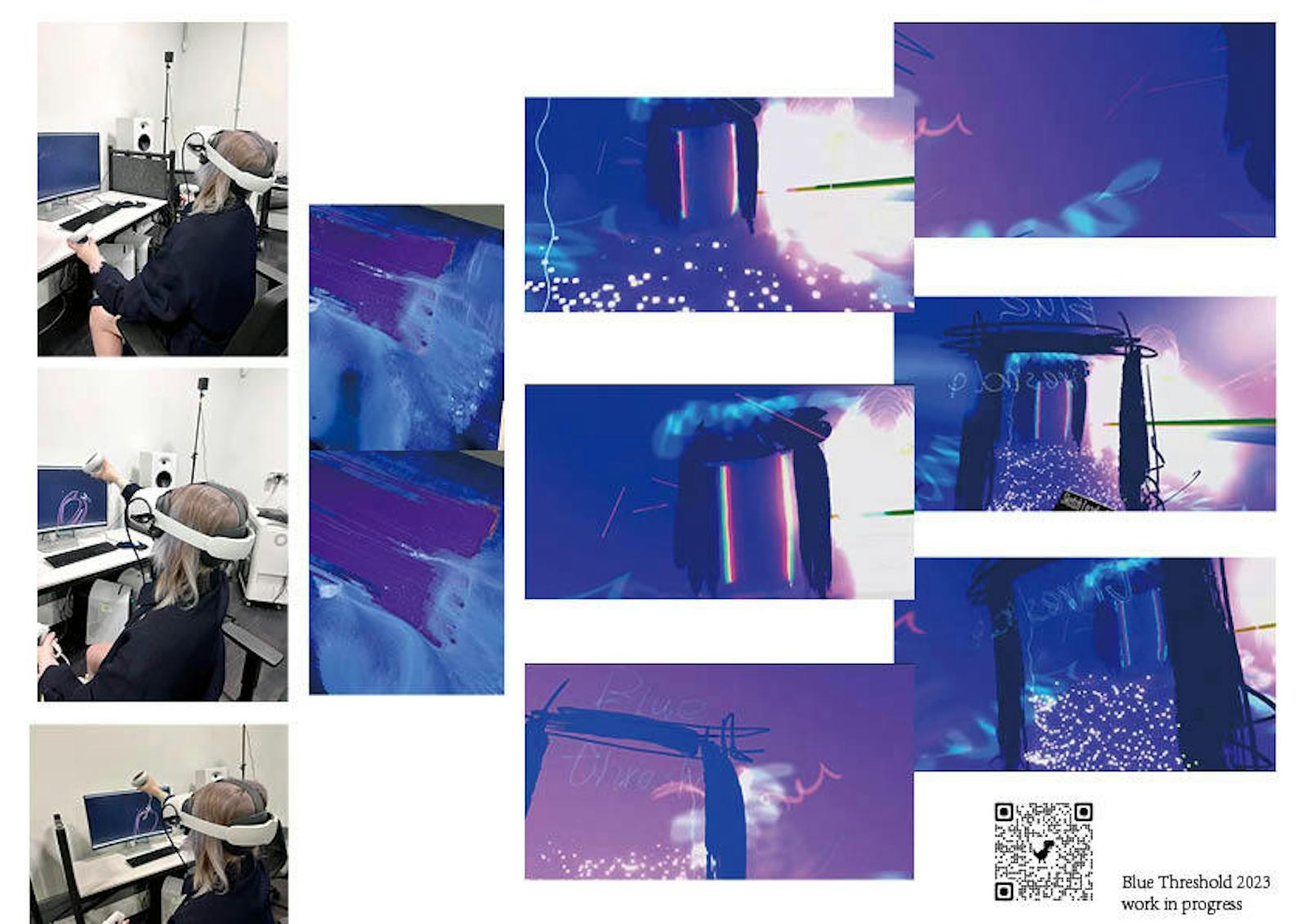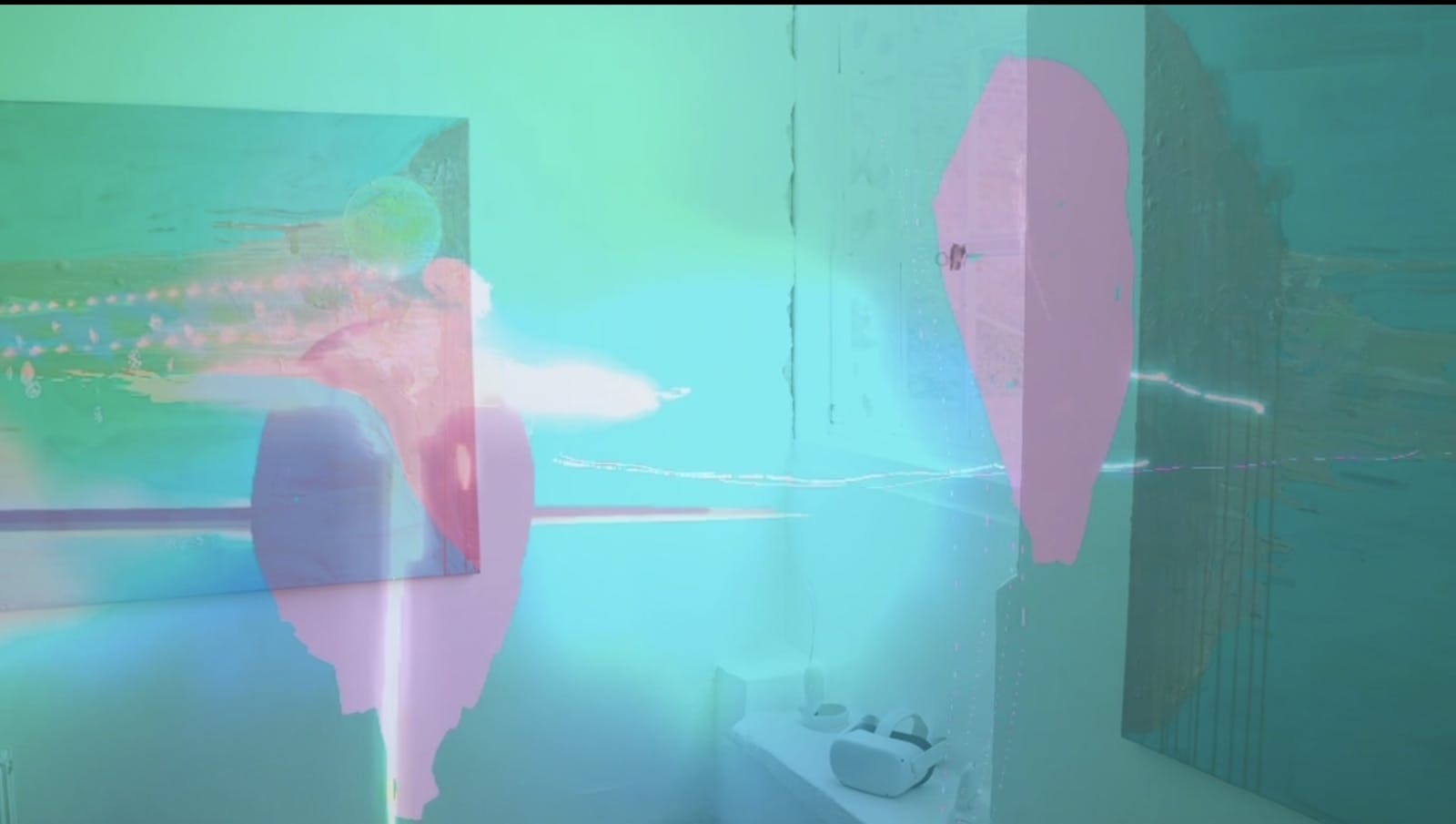Jinsi Zhang
Liminality: Colour-Field Painting between Analogue and Virtual Reality
Summary
Modernity as “permanent liminality”
An interspace has emerged from the explorations of navigating between analogue painting and VR painting. This manifests during the shift from
a VR environment back to analogue colour field painting, a space within the perception of painting itself, as informed by the embodied experience,
which, in painting terminology, is a space that exists beyond the subject, perception and materiality. It resembles the concept of "leaving blank" in traditional wash-ink Chinese painting. I have termed this emotionally embodied sphere as a 'liminal space'.
This research centres around the exploration of liminal space and its relevance to feminist studies. In contemporary society, the concept of liminal spaces has found manifestation in subcultural internet aesthetics and in uncanny, nostalgia-infused physical environments. As per van Gennep's (1960 [1909]) theoretical framework, liminal spaces can pertain to discrete thresholds or broader zones and through the lens of liminality, individuals and collectives undergo processes of deconstruction, reconstitution, and regeneration (Thomassen, 2014: 38). However, despite Victor Turner's (1969) exploration of gender dichotomies, a gap exists in addressing liminality within the context of women's studies in our current society.
Turner encountered van Gennep's theories during a period of personal spatiotemporal threshold, broadening the scope of liminality to include any 'betwixt and between' situations or objects and emphasising their fluid state and relevance in interpreting human responses.Thus, the concept of visual-physical liminal space
in painting refers to frames and the sense of passage between worlds. This space can be physical or temporal, representing a transition from the
tangible materiality of analogue painting to the ephemeral reality of VR painting — an immersive liminal space influenced by individuals’
abstraction and perception, the illusion of depth perception in mind. It represents a state of flux between negative space and positive space.
The liminal space depicted through my work in analogue painting and VR mirrors the experiences of feminists in an intermediate state. This study scrutinises how female artists have historically challenged the borders of abstract art, often contending with exclusion and overshadowing by their male counterparts. Female artists exist within a perpetually liminal state and this project aims to augment this perspective, positing a metaphor of painting between colour-field and VR as a liminal space. Inhabiting this 'liminal space' bears significance, as it possesses potential for female artists traditionally marginalised from the 'actual space' of painting.
With the advance of technology, Virtual Reality (VR) painting, which takes place within the bounds of an immersive digital environment, has emerged as a potent medium to contest the established norms of analogue painting. The unique proposition of VR painting lies in its ability to eliminate the aesthetic distance between the observer and the artwork, thus fostering a sense of oneness previously inaccessible in traditional mediums. This approach was devised to demarcate a theoretical boundary, thereby instigating a dialogue on the prospective relationship between 2D and 3D spaces, embodiment and perception, and the analogue and digital realms.
Additional info
Jinsi Zhang is an artist who locates her practice as on the liminality between analogue, colour-field painting and virtual reality painting. Working back and forth across the digital realm and canvases she describes as the sites of contemporary, lyrical, pouring painting, recalling the Chinese wash-ink landscape painting of her history, her work asks what it means to be in an in-between state, and how this state might be activated by post-cyberfeminists.





